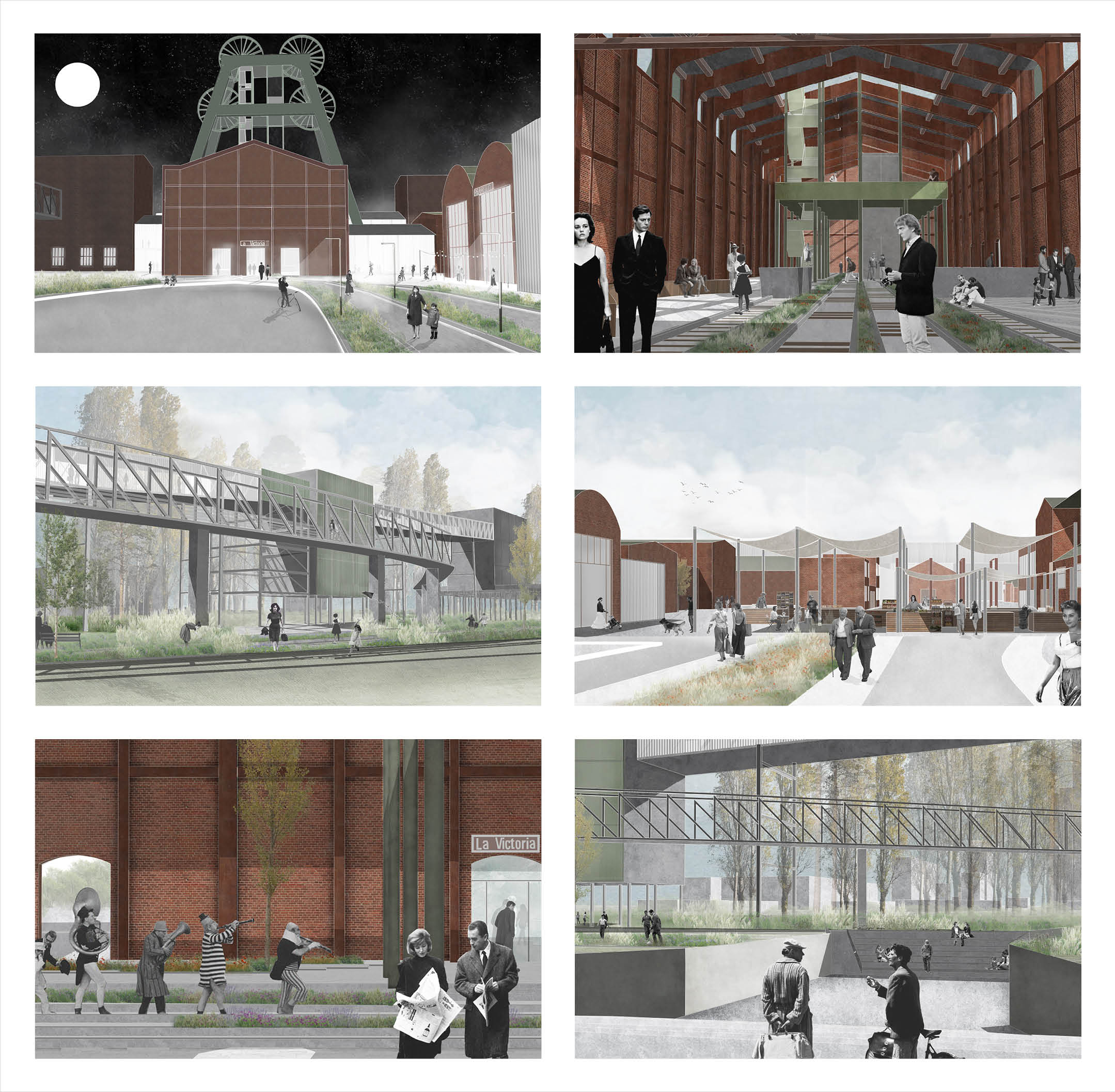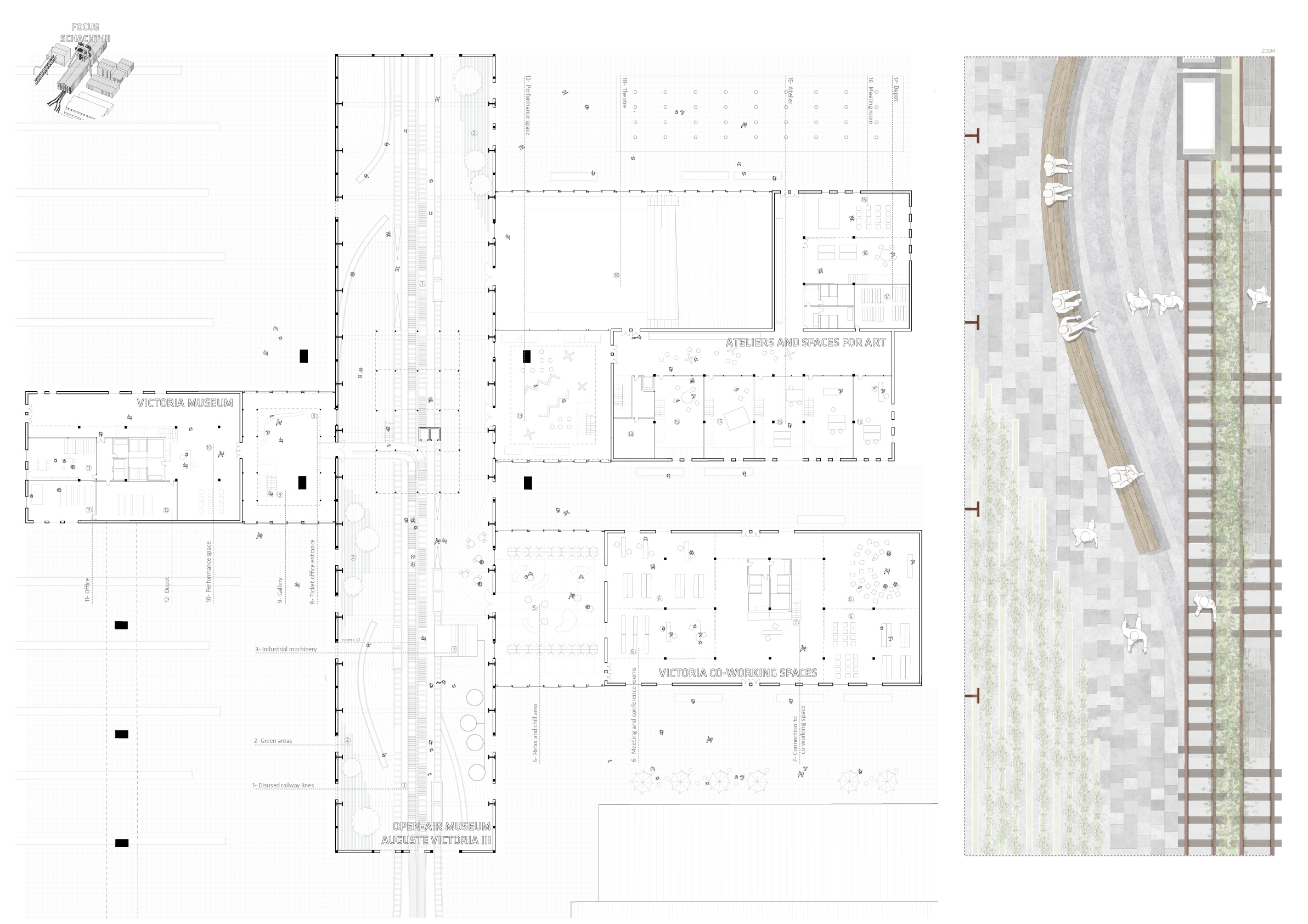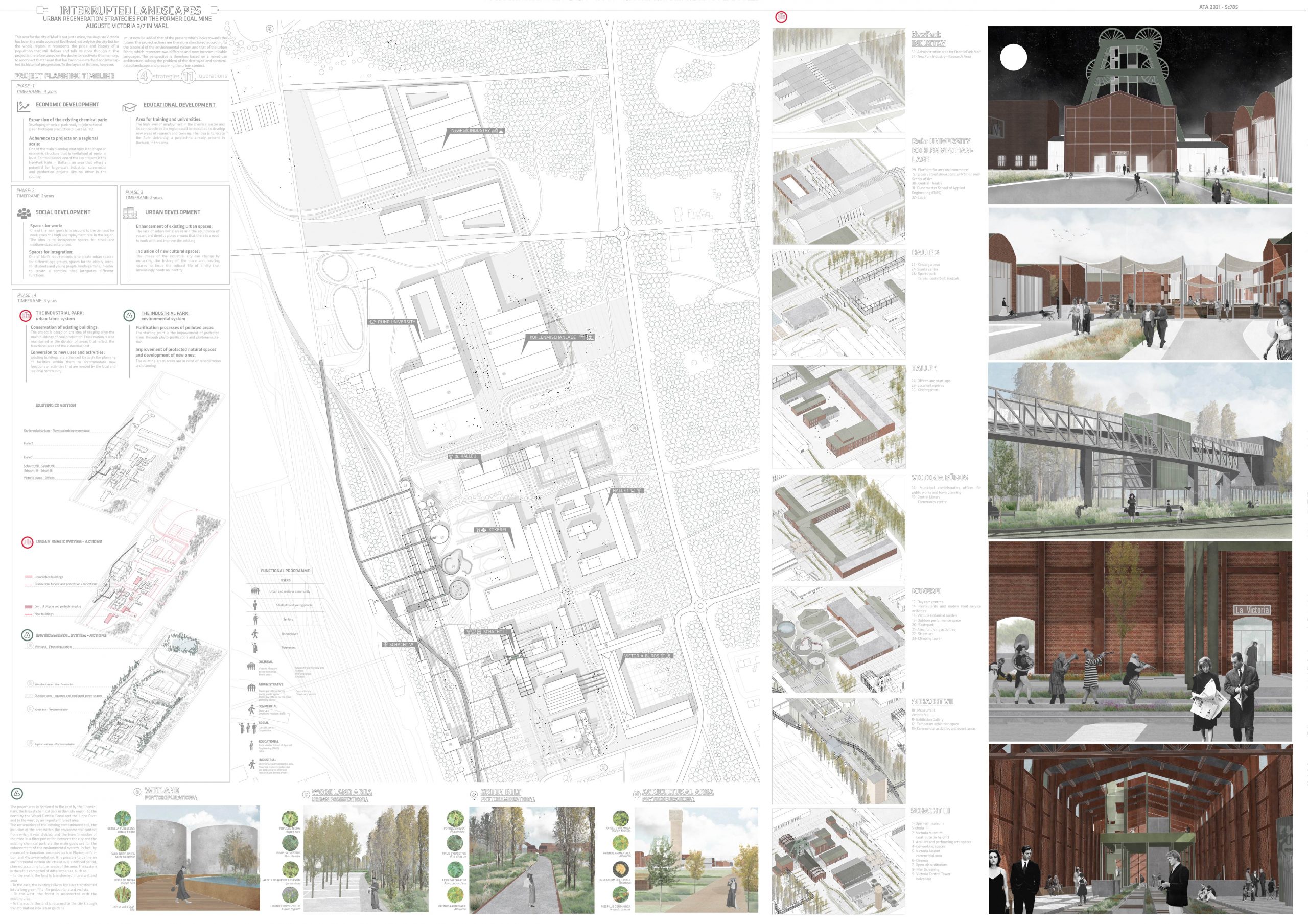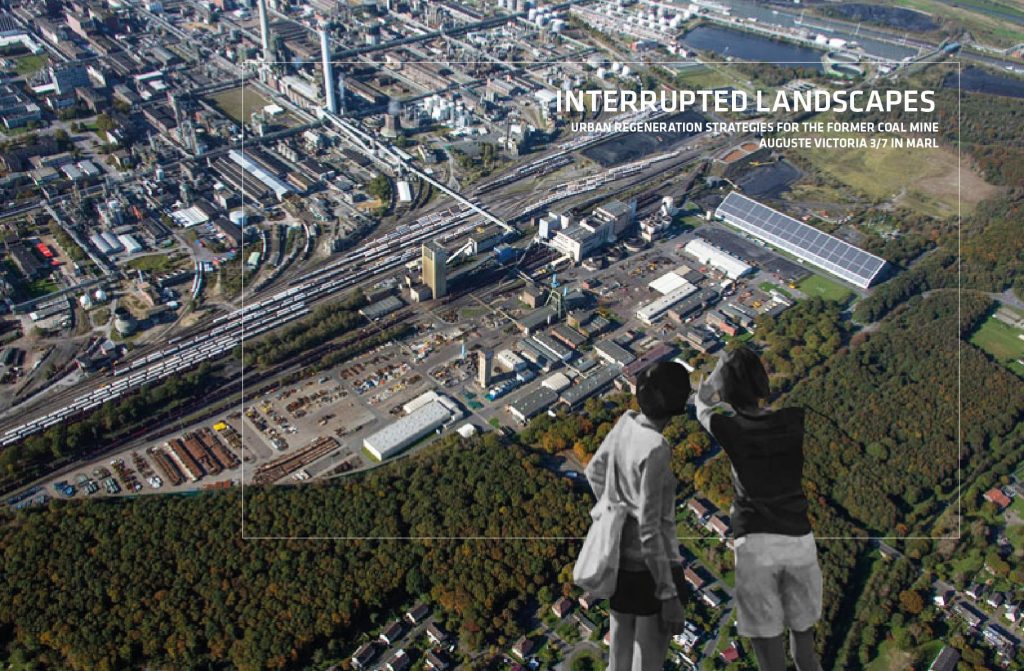The Ruhrgebiet, the engine of West Germany, constitutes a unique political and social unit in terms of architectural landscape shaped by industry. In the 1950s, during the post-war period in Germany”, few people imagined that within 50 years, heavy industry in the region would virtually close down. Few would have predicted that many of the remaining industrial sectors would become monuments to the German nation. In the Ruhrgebiet, conservation has not simply commemorated the past, but has significantly shaped the future of the region: in 2010 it entered the world stage as Europe’s “cultural capital”. So how is a cultural capital born from the smoker and ruinous heaps of abandoned industry?

This question was the starting point for analysing and in particular for the definition of strategies for the Auguste Victoria 3/7 project site in Marl, located in the northern Ruhrgebiet. The Auguste Victoria mine, opened in 1905, saw its history start with a large influx of miners from all over the world and reached its peak in 1950. In 1960, the mine had to face the problems of the coal crisis and the word “closure” was posted in front of its fence in 2008. This area for the city of Marl is not just a mine, the Auguste Victoria has been the main source of livelihood not only for the city but for the whole region. It represents the pride and history of a population that still defines and tells its story through it. The project is therefore based on the desire to reactivate this memory, to reconnect that thread that has become detached and interrupted its historical progression. To the layers of its past time must now be added that of the present, which looks towards the future, that of the 2030 agenda, that of environmental sustainability, that of productivity. And so its memory can reborn and transformed, becoming productive, where in other words the conservation of the existing is joined by the planning of new uses and new strategies that can enhance the area and make it alive again. The project actions are therefore structured according to the binomial of the environmental system and that of the urban fabric, which represent two different and now incommunicable languages

The project area is bordered to the east by the ChemiePark, the largest chemical park in the Ruhr region, to the north by the Wasel-Datteln Canal and the Lippe River and to the west by an important forest area.The reclamation of the existing contaminated soil, the inclusion of the area within the environmental context from which it was divided, and the transformation of the mine in a filter protection between the city and the existing chemical park are the main goals set for the enhancement of the environmental system. In fact, by means of reclamation processes such as Phyto-purification and Phyto-remediation, it is possible to define an environmental system structured over a defined period, planned according to the needs of the area. The system is therefore composed of different areas, such as wetland, woodland area, green belt and agricultural area, that make it possible to create a greater identity and greater usability. In the meantime, the planning of the urban fabric of the mine is based on the definition of a new urban compactness and a new livability. The determining actions are therefore, the reuse of the existing buildings and its enhancement, the design of bicycle and pedestrian paths and in particular of a central spine in connection with all the main buildings and finally the development of squares and open spaces.

The Board:






